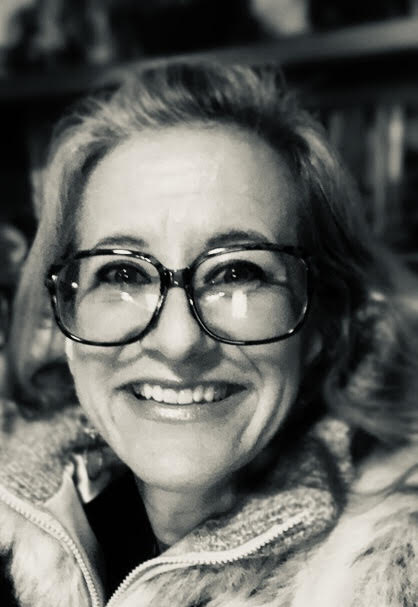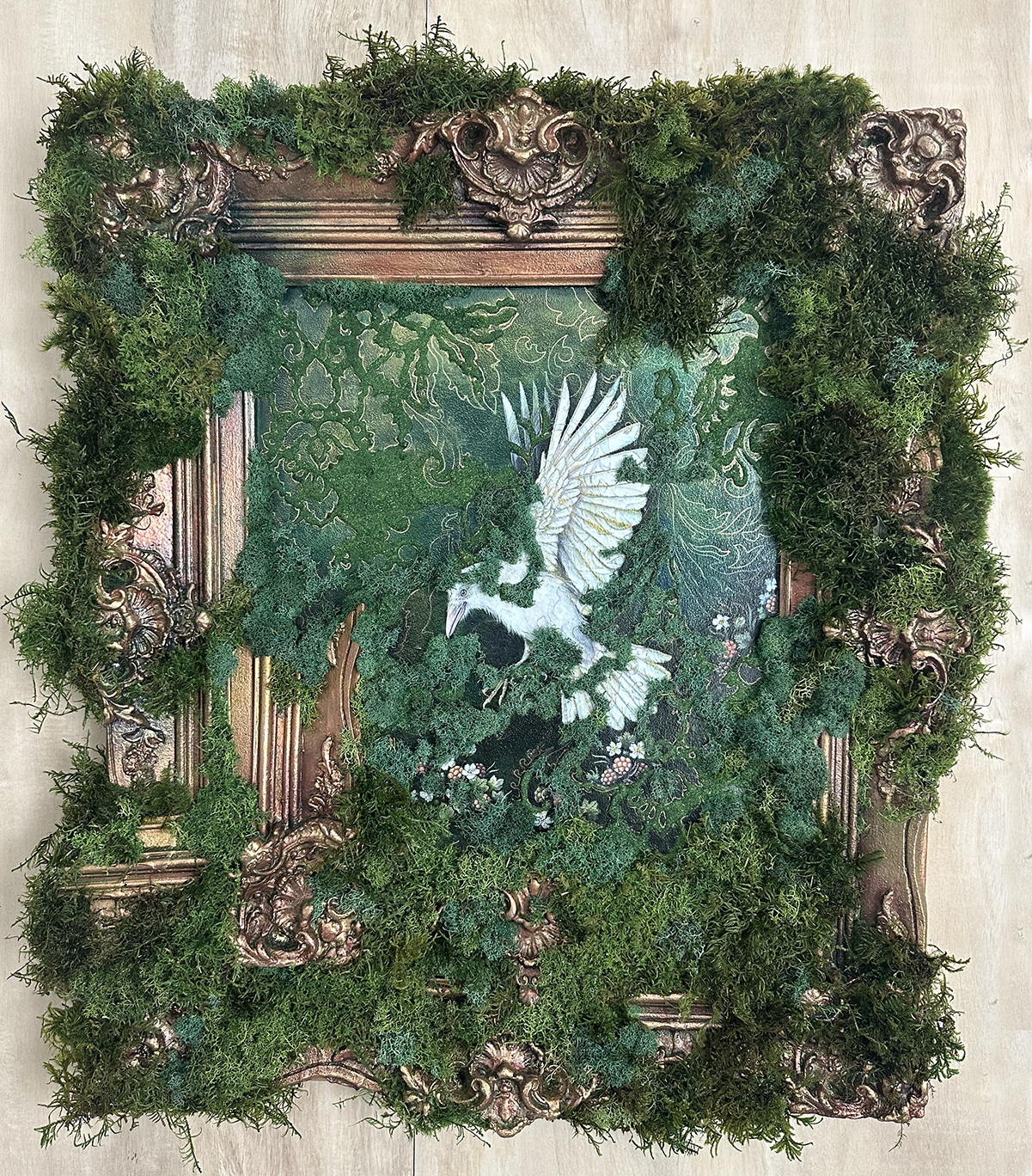Continuum
No Longer Available
Completed
2024
Medium
Oil, Acrylic, Moss, Sawdust, Plaster on Panel
Dimensions
27" x 30" x 4"
Description
I work between disciplines of science, ecopsychology, history, and social practice to understand how human beings interact with, respond to, and alter their natural environment. My work incorporates layers of meaning and speaks through carefully chosen symbolic imagery, materials, mediums, and locations. With a focus on the natural world and the catastrophic changes that are happening globally, part of my goal as an artist is to reframe one’s awareness. This can mean to remind the viewer of the natural world through a sense of investigation, awe, and wonder. It can also gently probe the knee-jerk response of consumerism, allowing the viewer to question what choices are made for them, and what different choices they can possibly make. My work often holds these two truths simultaneously because the monumentally abstract concepts, patterns, systems, and obstacles facing individuals and societies require this strong balance. My newest work, Continuum, is a blend of mythology, history, and science. My obsession with mosses, liverworts and lichens stems from their evolutionary resilience; they were the first to make the leap out of the oceans and onto the land around 350 million years ago. Ubiquitous in their own right, these tiny plants often go unnoticed as they creep across surfaces, living off air and rain. Continuum shows the creep of moss across the mutated, glitched, Baroque-framed painting of a white raven-like bird landing on a patch of cloudberries. Cloudberries have recently jumped the pond from mainland Norway and have settled on Svalbard. According to scientists, their migration that far North is due to global warming. White ravens do exist in a small colony in British Columbia but are exceptionally rare due to a recessive gene. Despite their rarity, they have now been spotted in Alaska. There is an indigenous myth that when the White Raven returns, it will usher in a new era of spirituality for human beings – one that sees no separation between man and nature. In contrast, the Baroque era was marked by overexaggerated signs of wealth, and an eroding connection between humans and their ecosystems.About this Artist

Regan Rosburg
Regan Rosburg is an interdisciplinary artist who weaves together science, psychology, history, and social engagement. With a passion for studying various ecosystems and biota, her work investigates not only the exquisite intelligence of ecology, but also the causes and ramifications of over-consumption. Her research on ecopsychology and art was published in the IGI International Journal of Civic Engagement and Social Change (2017). Regan firmly believes that artists are a crucial ally when dealing with pressing global issues. She has partnered with Human Rights Watch (Chicago, IL), the Bulletin of the Atomic Scientists (with Weinberg Newton Gallery, Chicago, IL), and the Center for Local Prosperity (Pugwash, Nova Scotia). Regan’s work has been featured in BBC News (Culture), the New Art Examiner, CPR News, and Yale University’s Order of Multitudes. Regan is an Associate Professor at the Rocky Mountain College of Art + Design, and the Artistic Director of Cayo Residency (Saõ Sebastiaõ,…
View Full Artist Bio
Contact Us
For inquiries, comments, and acquisitions, please feel free to contact us any time. We welcome your input and conversation.
